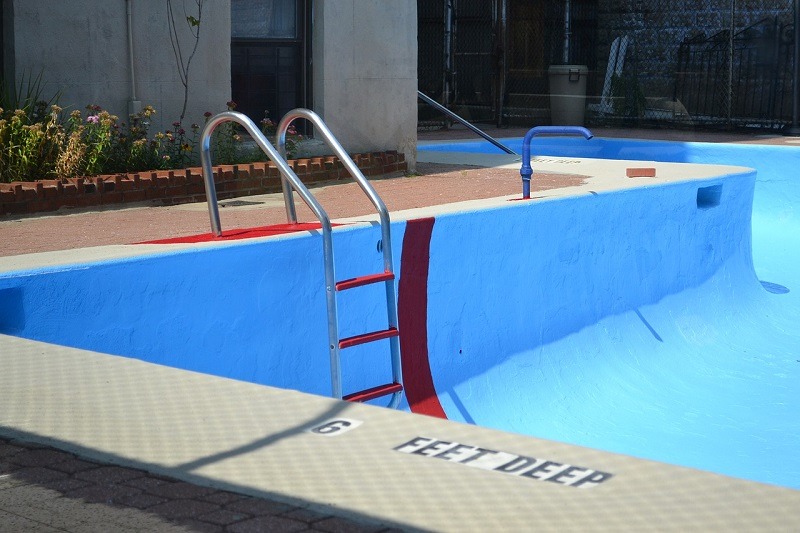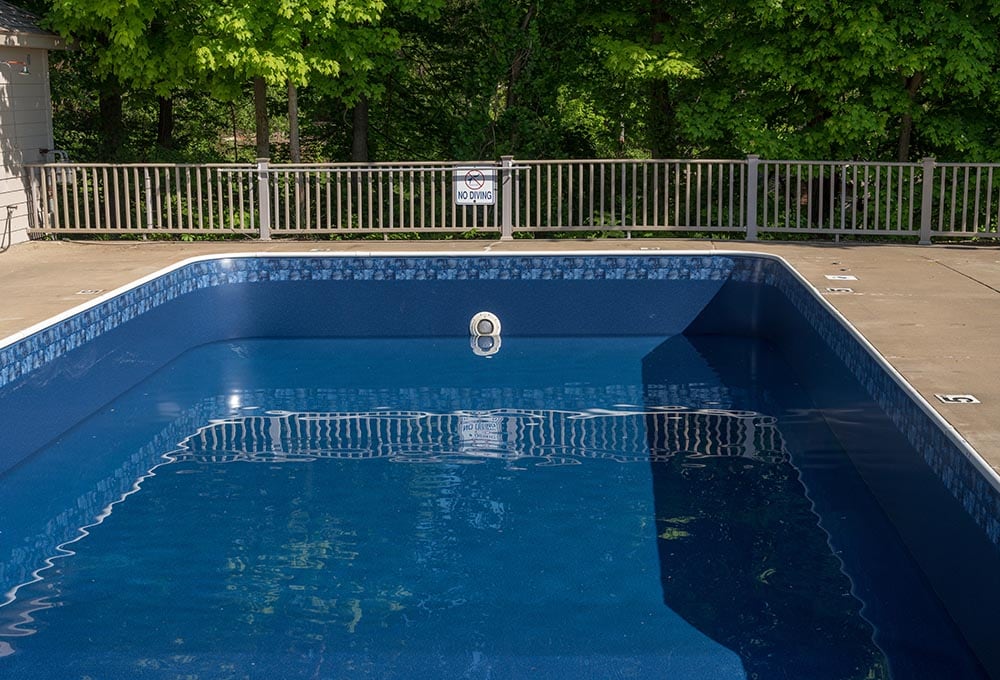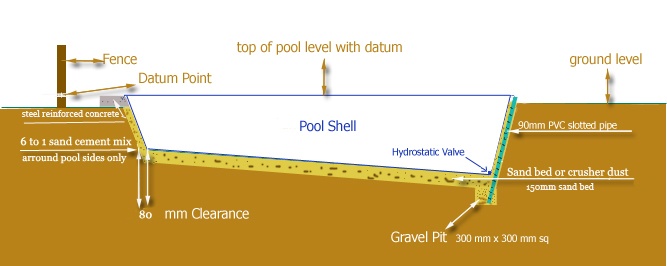How to Drain Your Inground Pool (Fast & Easily)
-
Pete Ortiz
- Last updated:

Draining your inground pool can be an extremely risky endeavor, and it is something we recommend only as a last resort. Draining an inground pool is more dangerous than draining an above-ground pool because the ground can cave in, destroying the walls. Any damage that occurs to an inground pool is going to be many times more expensive to repair than that of an above-ground pool.
We recommend only draining pools that have a hydrostatic valve and calling a professional if you have any reservations about emptying the pool yourself.
 When Do I Empty My Pool?
When Do I Empty My Pool?
Unlike above-ground pools where you drain some of the water out of during the winter season and replace it again in the spring, the inground pool water rarely changes. After about six or seven years, minerals and other contaminants can reach a level that can no longer be treated by the filter system, and you will need to replace the water.
As it happens, six or seven years is also the life expectancy of a hydro valve, so this is a great time to replace yours to ensure your pool pressure relief system is operating correctly.
Draining is also a great time to scrub down the walls, scrutinize them, and apply any sealants and chemical protectants that it might need.
Never drain your pool when there has been a lot of rain, or if you expect a lot of rain because the water can enter the ground and increase the pressure against your pool walls.
Hydrostatic Valve
A hydrostatic valve is a one-way valve placed in the deepest part of your pool. The hydrostatic valve helps release pressure on the outside of the pool from groundwater by allowing water to seep into the pool.
If you have ever noticed that your pool water was muddy after a heavy rainstorm, it’s because the valve is working correctly and has allowed some of the rainwater to enter the pool through the valve instead of pressing against the walls.
If this valve were not present, the force on the outside of the pool could grow so strong that it could crack, or push in the walls. It could also push the pool out as a complete unit and cause it to float like a boat.
How much groundwater you have around your pool will depend on where it is. Higher elevations have less groundwater than lower elevations, and recently tilled ground tends to hold a lot more water than soil that hasn’t been touched in decades and is more compact. The amount of rain your location gets will also have a significant impact on the groundwater level.
It’s important to remember that this process can only do so much, it’s not for an empty pool, and it’s very slow-acting. You will drain your pool much faster than the groundwater can find its way to this plug. Still, we would never recommend emptying your pool without one.
Pool Type
There are two main styles of inground pools: those with vinyl walls and those with concrete walls.
Vinyl Walls

Vinyl pools are the modern style of the inground swimming pool. These pools are extremely durable and can take years of abuse. Vinyl pools are much less likely to crack from the pressure of the groundwater, but they’re also much lighter in weight and more prone to popping out and floating, as we’ve mentioned earlier. Vinyl pools are also the most likely not to have a hydrostatic valve.
You can install a hydrostatic valve in a vinyl pool, and we recommend you consider it if your pool does not have one.
Concrete Walls

Concrete-walled inground pools are much older than vinyl pools and suffer from their own set of problems. Concrete walls are much more prone to cracking, and older concrete pools may not have a hydrostatic valve installed or be as structurally sound as the modern varieties.
On the positive side, concrete is very heavy and is unlikely to float up out of the ground like a vinyl pool might
Draining the Pool
Some pools drain through the filter, and in this case, it’s just a matter of selecting the proper setting on your filter and letting the pool do the work. If this isn’t the case for your pool, you’re going to need to use a submersible sump pump to get the job done. A siphon will not work in this case because the water is below ground level.
Sump Pump
Submersible sump pumps are easy to use and only require connecting an outlet hose to the pump and submerging it to the deepest point of your pool. Sump pumps are not very expensive, but since inground pools are larger and require bigger pumps than the type we need for an above ground pool, we recommend renting one for a day or two instead of purchasing a new one.
We strongly recommend getting the proper gauge hose for the pump you use, as many of these pumps are strong enough to blow out a cheap one.
Water Disposal
Finally, you need to consider where you will dispose of the water when it leaves your pool. You might be lucky enough to have a drainage system built into your pool filter system, but if you’re using a sump pump, you’re going to need to find a place for the water to go. Most cities have laws that state you need to empty the water into an approved storm drain, so you’ll need enough hosing to cover that distance. Since the volume of water in an inground pool is often very high, you may also be required to notify the property authorities when you are going to be draining the pool to ensure the water has a clear path to prevent any flooding.
Even if you live in a rural area that lacks rules, you don’t want the water to end up anywhere near your pool walls, where it can contribute to damage.
 Conclusion
Conclusion
That’s all you need to know to drain your inground pool, but please consider it carefully. Do the work you need to do and fill it back up quickly before any damage occurs. The sump pump will drain the pool in a day or two, and that should give you plenty of time to scrub it down, and check for cracks and wear. When the pool is empty, you should notice water around the hydrostatic valve. Water entering the pool means the valve is working, and you may be surprised to see how much water comes in through.
Is this guide has helped you learn how to drain your inground pool fast and easily, please share this guide on Facebook and Twitter.
Featured Image Credit: ArtisticOperations, Pixabay
Contents

 When Do I Empty My Pool?
When Do I Empty My Pool?
